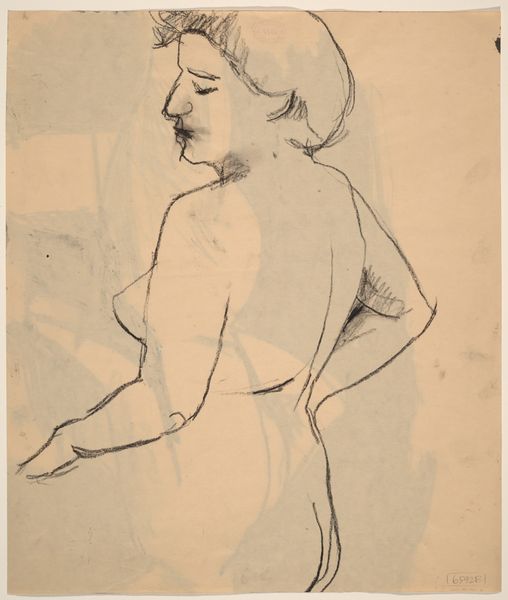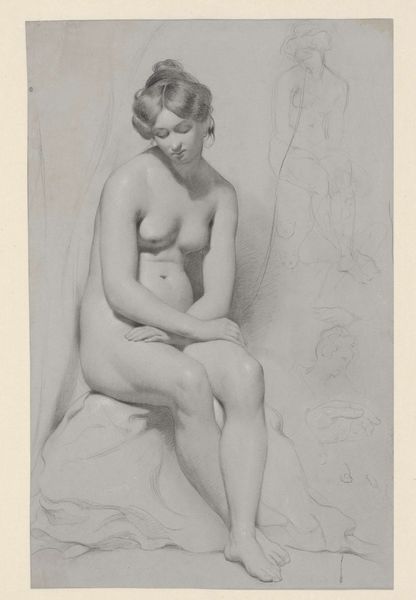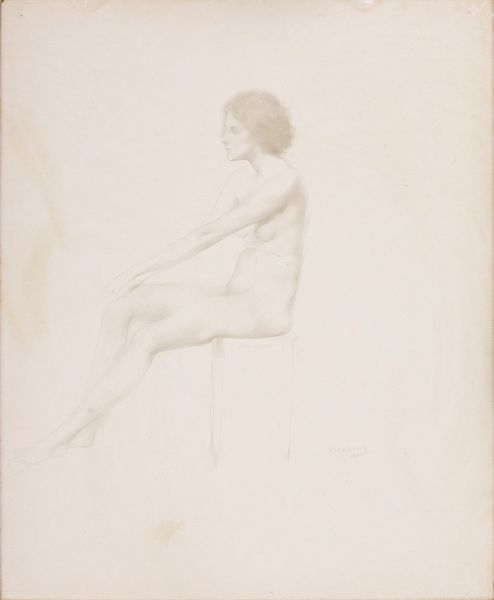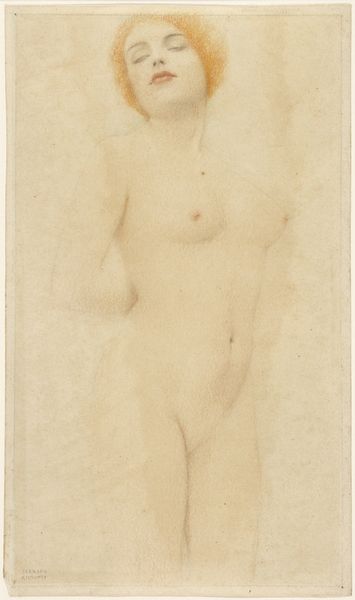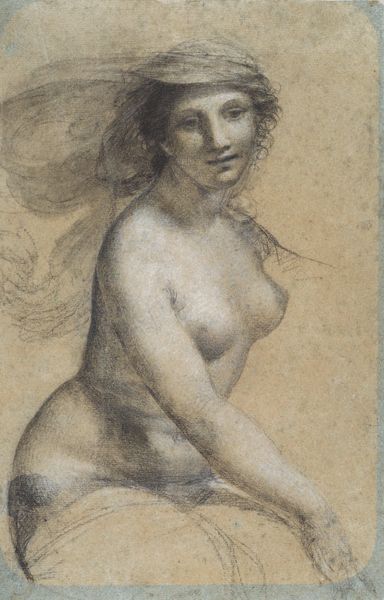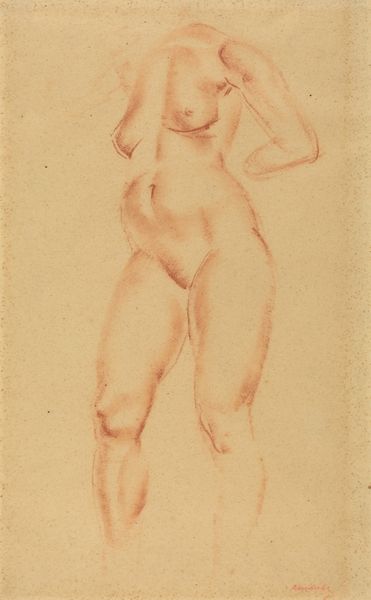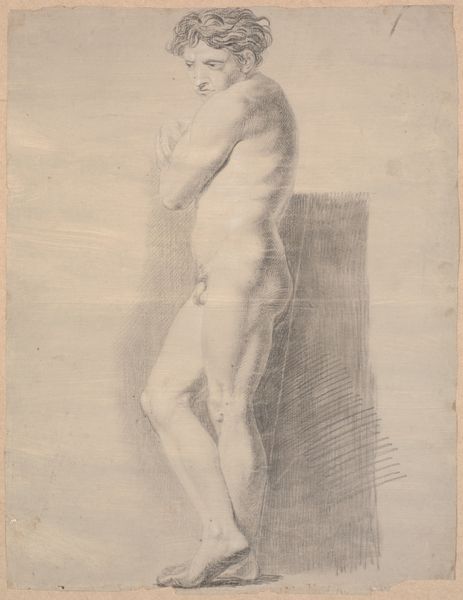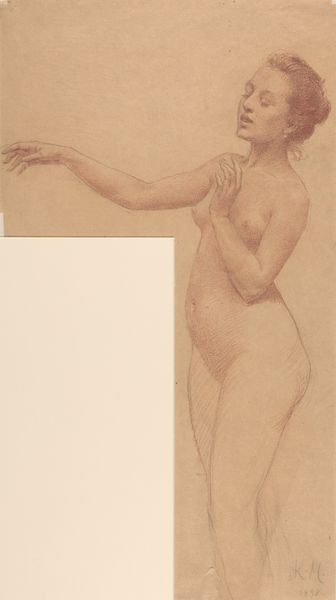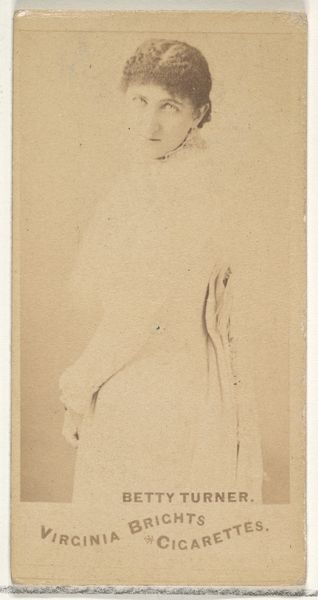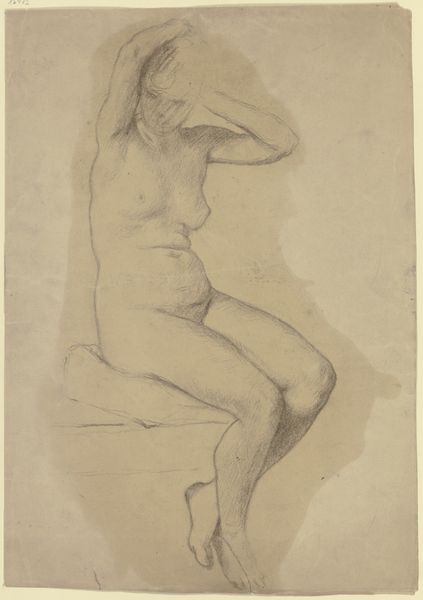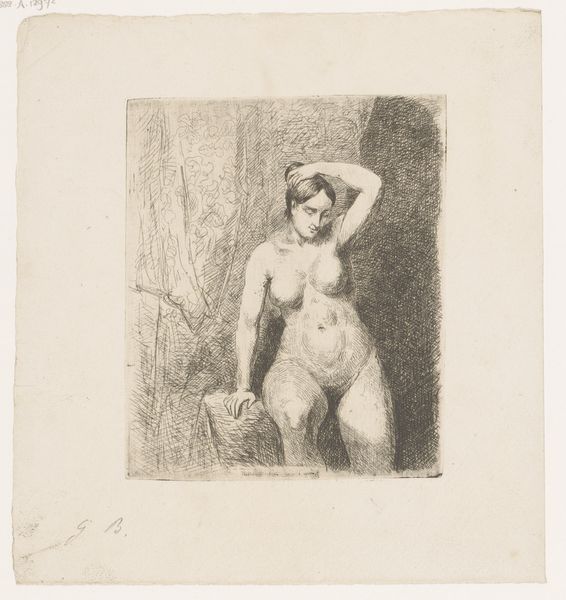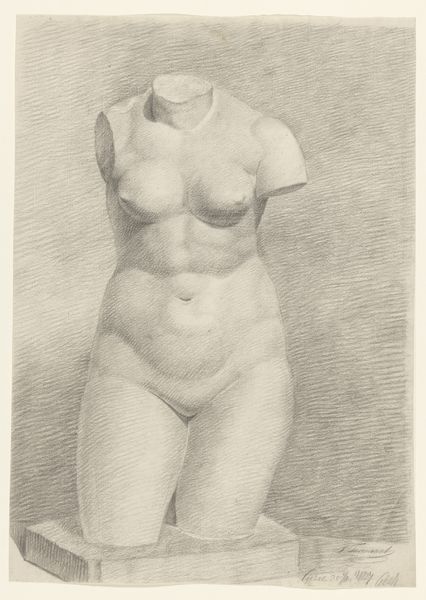
drawing, pencil
#
portrait
#
pencil drawn
#
drawing
#
charcoal drawing
#
pencil drawing
#
pencil
#
portrait drawing
#
academic-art
#
nude
#
realism
Dimensions: image (irregular): 24.77 × 18.42 cm (9 3/4 × 7 1/4 in.) sheet: 31.75 × 25.4 cm (12 1/2 × 10 in.)
Copyright: National Gallery of Art: CC0 1.0
Curator: Standing before us is Philip Leslie Hale’s "Seated Female Nude," a drawing executed in pencil, likely sometime between 1887 and 1920. Editor: My initial impression is one of quiet vulnerability. The limited tonal range creates an intimate atmosphere; she appears contemplative and withdrawn. Curator: Indeed. Hale’s work, though often categorized within academic realism, carries an underlying exploration of feminine identity during a transitional period. We might consider how this pose, seemingly classical, also hints at the constraints placed on women in that era. The downward gaze, for instance, could be interpreted as a sign of societal expectation. Editor: From a purely formal standpoint, the composition directs our attention to the model’s gaze through soft, sweeping lines that form a spiral effect toward her head. Observe how light and shadow define the curves of her form. It's interesting to examine what is *not* present, how Hale chose what to emphasize. Curator: Exactly. And it's also pertinent to acknowledge the context of nude studies at the time. How does this compare to, say, earlier odalisque paintings? Or even male nude studies, in how they represent power dynamics? Here, the very act of being seated implies a passive observation, a gaze. Editor: Absolutely. This also informs a kind of compositional stability – like the grounding base tone – that gives the subject a gentle dignity. Curator: Placing this nude study within that framework encourages viewers to reflect on historical perceptions around beauty standards and their representation in art, something Hale perhaps unconsciously grappled with. Editor: I agree. Whether consciously explored by Hale, it opens possibilities for interpreting form and tone as conveyors of subtle but powerful emotive signifiers. Curator: Considering how artists, like Hale, navigated their positions in an era of changing social mores expands our understanding of visual codes prevalent during that time. Editor: I concur. It reminds me that seemingly quiet art can inspire louder conversations, offering a spectrum of critical, historical, and artistic analysis.
Comments
No comments
Be the first to comment and join the conversation on the ultimate creative platform.

